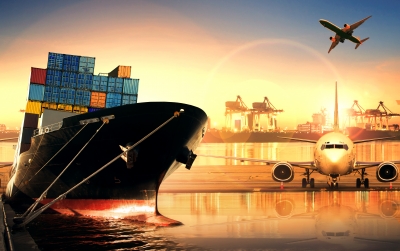-
New NAIA Infra Corp. (NNIC) is preparing to roll out a facial recognition system at Ninoy Aquino International Airport (NAIA) that will allow travelers to check in, drop bags, clear security, and board flights using just their face
-
The launch of the facial recognition system powered by Collins Aerospace will cap NNIC’s first year as private operator of the country’s main gateway
-
From September 14, 2024 to September 13, 2025, NAIA welcomed 51.7 million passengers, 6% higher year-on-year
-
The upward adjustment on the passenger service charge took effect on September 14
-
Operational changes include reconfiguring aircraft parking stands, expanding taxiway movements, and removing abandoned aircraft to free up valuable space for smoother airside operations, among others
New NAIA Infra Corp. (NNIC) is preparing to roll out a facial recognition system at the Ninoy Aquino International Airport (NAIA) that will allow travelers to check in, drop bags, clear security, and board flights using just their face.
The launch of the facial recognition system powered by Collins Aerospace will cap NNIC’s first year as private operator of the country’s main gateway. NNIC took over NAIA on September 14, 2024 after being awarded the 15-year contract to rehabilitate, expand, and operate the airport.
From September 14, 2024 to September 13, 2025, NAIA welcomed 51.7 million passengers, 6% higher year-on-year, NNIC said in a statement.
The airport also handled 283,771 flights. During this period, NAIA also attained an on-time performance high of 92.12% in a single day — the highest ever recorded in the airport’s history, NNIC noted.
READ: NAIA drastic improvement seen with new operator – transport chief
Operational changes include reconfiguring aircraft parking stands, expanding taxiway movements, and removing abandoned aircraft to free up valuable space for smoother airside operations, even allowing NAIA to add new domestic and international routes with 47 airline partners.
Inside the terminals, improvements included 11,820 new chairs, 2,500 baggage trolleys, 21 new air-conditioning units and chillers, and Wi-Fi upgraded from 1G to 10G.
All escalators, walkalators, and elevators are now operational, while 34 new boarding bridges have been ordered.
Restroom renovations are ongoing, with one set already refurbished, six under renovation, and 10 new ones planned.
A dedicated OFW lounge in Terminal 3 has served nearly half a million overseas Filipino workers, with a second lounge set to open at Terminal 1.
NNIC said -passenger mobility has also improved with a fleet of 20 new shuttle buses, already carrying more than half a million travelers between terminals.
Behind the scenes, baggage handling was streamlined to process 51.3 million bags over the past year, keeping pace with the passenger surge without the long queues NAIA was once known for.
Beyond physical upgrades, NNIC said it has begun embedding global standards, pursuing ISO certifications in quality, environment, and safety. Its sustainability initiatives include clearing 266,463 tons of waste and silt from surrounding waterways to reduce flooding, introducing a Tenant Environmental Handbook, and rolling out green policies such as a single-use plastics ban, water conservation, composting, and energy efficiency measures.
To sustain these gains, NAIA’s terminal fees have been updated for the first time in 20 years starting September 14.
The revised fees, dues, and charges under Manila International Airport Authority Revised Administrative Order (AO) No. 01 series of 2024 updates the fees imposed since 2000.
READ: Brace for higher NAIA fees, airlines tell passengers
Under the AO, the upward adjustment on the passenger service charge (PSC) takes effect from the first anniversary of the takeover. It still exempts infants, OFWs, and flight and extra crew, among others.
Even with the adjustment — which NNIC noted was set by government with the Asian Development Bank as adviser — NAIA’s rates will only match other local airports and remain among the lowest in Asia. Since the turnover in 2024, NNIC said it has already remitted P48.3 billion to government, including a P30-billion upfront payment, with 82% of revenues going directly to the state.
READ: NAIA implements new aeronautical, cargo terminal fees
“Operating an airport the size and scale of NAIA will always be demanding. But what this first year has shown is that with teamwork, discipline, and the dedication of our people, real change is possible,” NNIC president Ramon Ang said.
“Our employees — from the frontlines to behind the scenes — are the reason we have been able to serve more passengers, run more flights on time, and start building the airport the Filipino people deserve. Together with government and our partners, we will sustain these gains and finally deliver a truly world-class NAIA,” Ang added.









